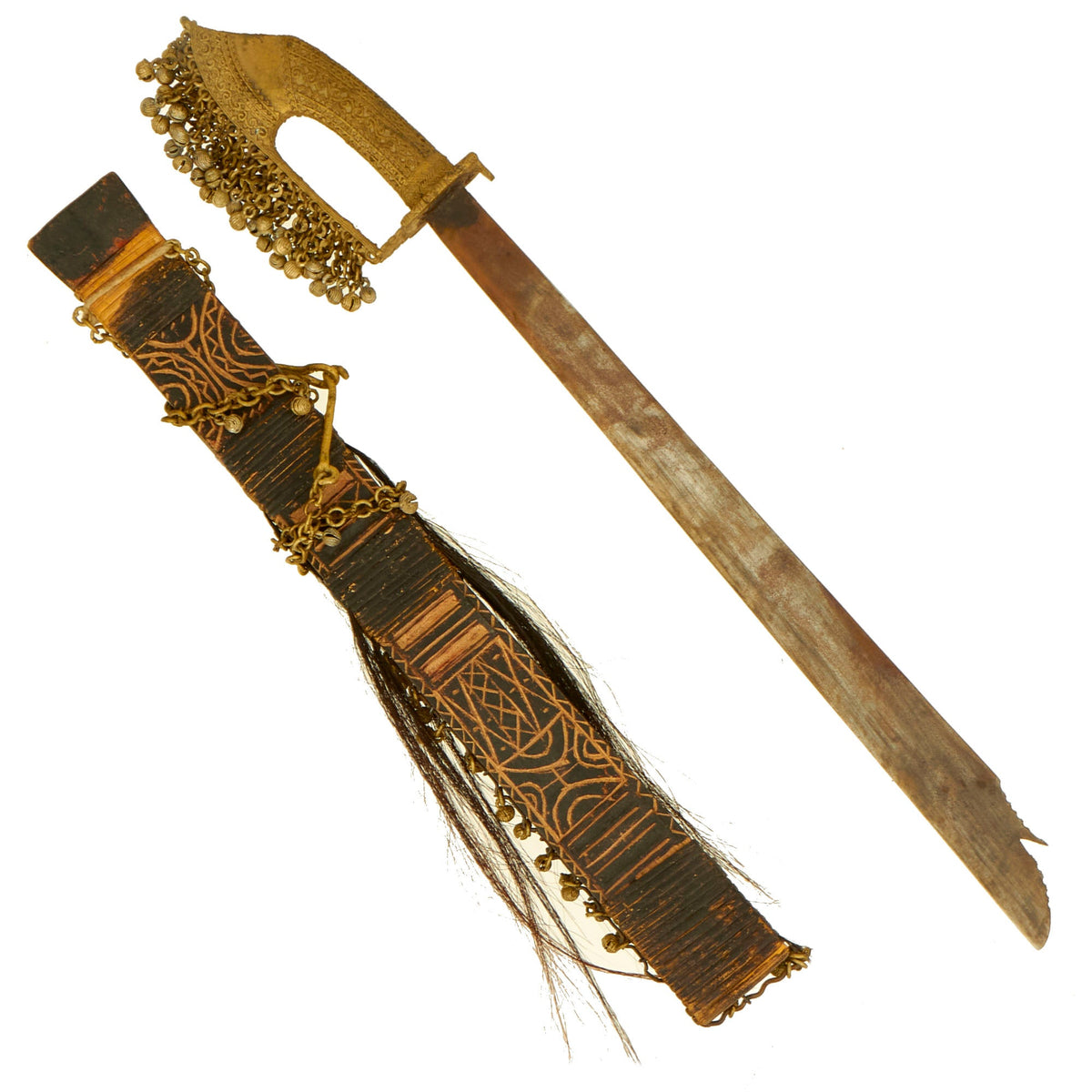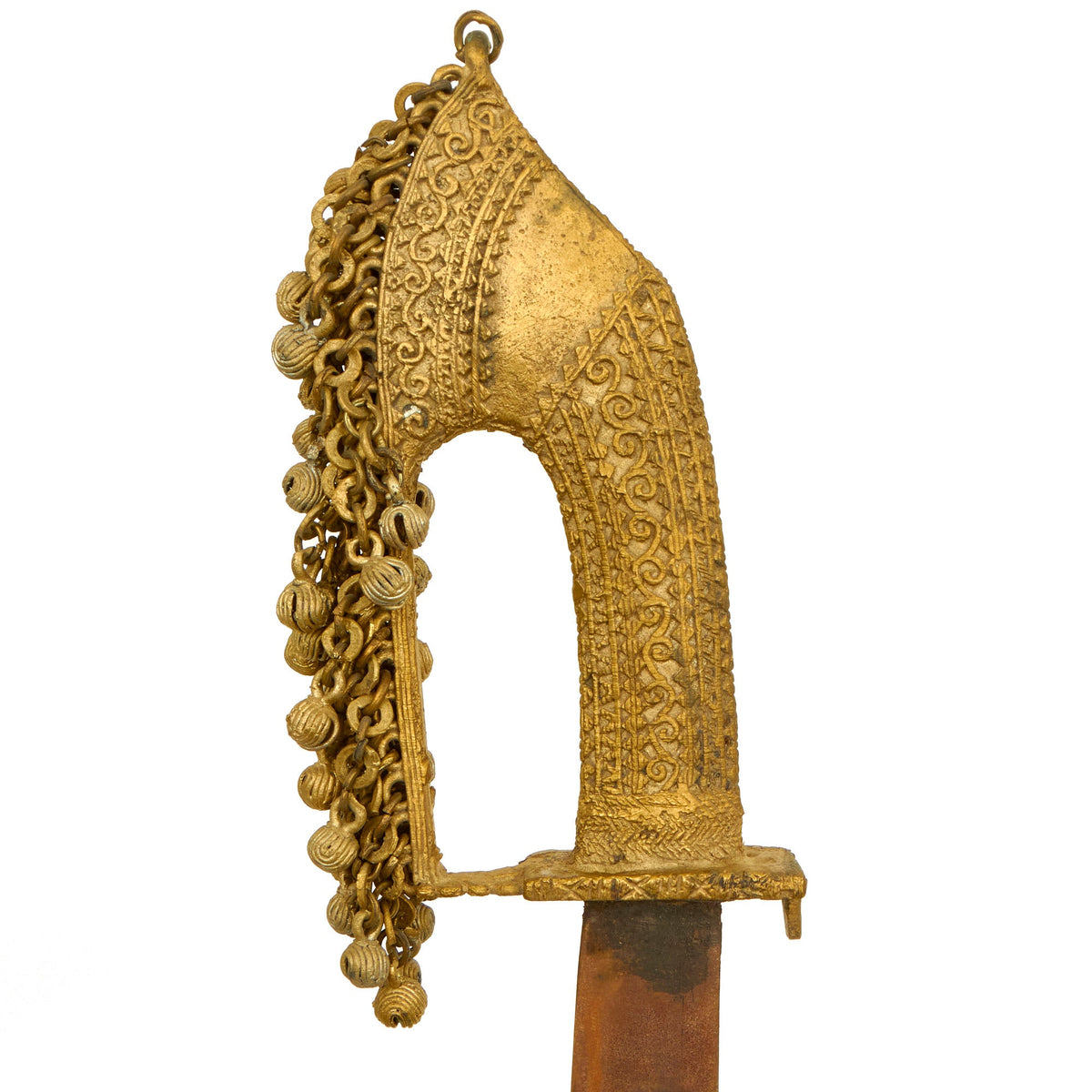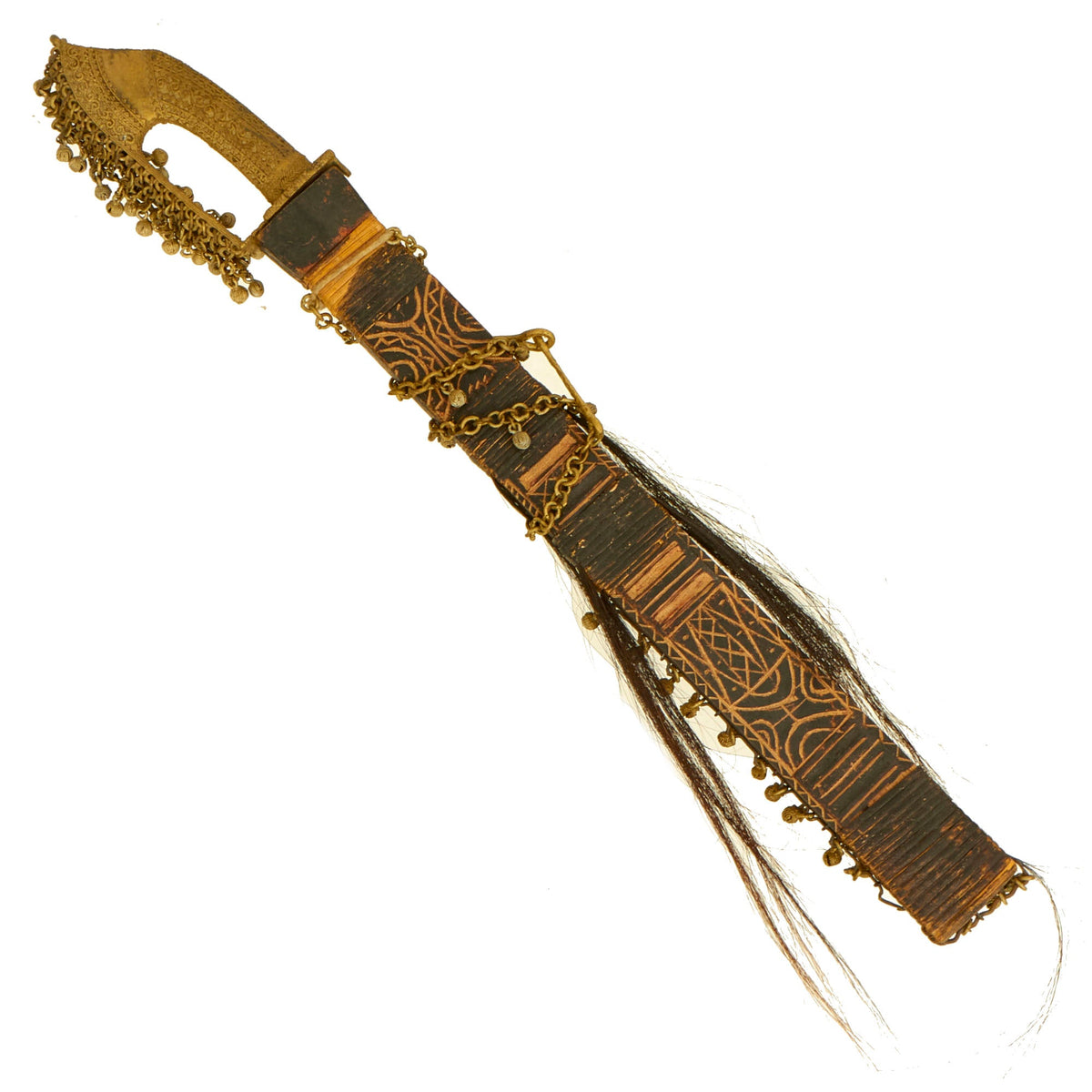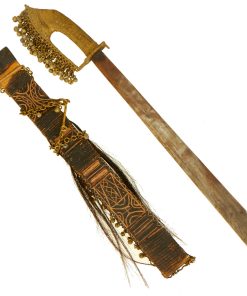Original 19th Century / Early 20th Century Philippines T’Boli People Kampilan Sword With Scabbard – Rare Variation Original Items
$ 395,00 $ 118,50
Original Item: Only One Available. This is a wonderful example of a rare variant of the Filipino Kampilan sword. This type of variation was seen being used by the T’Boli People, an Austronesian ethnic group native to South Cotabato in the southern Mindanao region of the Philippines. T’bolis currently reside on the mountain slopes on either side of the upper Alah Valley and the coastal area of Maitum, Maasim and Kiamba in the province of Sarangani. In former times, the T’bolis also resided in the upper floor of the Alah Valley. After World War II and the arrival of settlers from other parts of the Philippines, they have been gradually pushed to the mountain slopes. As of now, they have almost been expelled from the fertile valley floor.
“Kampilan” is the term most commonly used for the sword in the Tagalog, Ilocano and Visayan languages. It simply means “sword”. It is known by other names in other ethnic groups in the Philippines including Kapampangan talibong or talibon; Maranao kifing; Iranun parang kampilan; and T’boli tok and kafilan.
The laminated steel blade of the kampílan is single-edged, and usually made from Damascus steel pattern welding process, though not this example, and is easily identified by its tapered profile, narrowest near the hilt and gently widening until its truncated point. The blade’s spikelet has led to the description of the kampílan in some documents as “dual-tipped” or “double-tipped” and can be clearly seen at the end of the blade.
The hilt is quite long in order to counterbalance the weight and length of the blade and is made of hardwood. As with the blade, the design of the hilt’s profile is relatively consistent from blade to blade. The hilt is sometimes wrapped with rattan to improve the grip. At times the hilt was bound to the hand by a talismanic piece of cloth to prevent slippage. Sometimes a chain mail covering was attached to prevent the hand from injury. Almost all kampílan originally had large metal staples protruding from the cross guard above the grip.
Kampilan hilts are typically made from hardwood, but expensive examples that belonged to datu are covered in silver sheet or are entirely manufactured out of expensive materials such as horn or bone. Like the blade, they may possess small holes at the tips and edges which can have attachments like the bells you see on this example, metal chains, or animal or human hair tassels. Some kampilan hilts, especially among the Lumad, can also be made entirely of brass. The hilt on this example is of very ornate brass.
The scabbard is usually made of cheap wood and is bound with simple rattan or fiber lashings. When the sword needs to be used immediately, the sword bearer will simply strike with the sheathed sword and the blade will cut through the lashings, thereby effecting a quick, tactical strike without the need to unsheathe the sword.
Scabbards are unadorned and are often disposable when going into battle. Some scabbards were also made of bamboo or were made with a handle that allowed half of the scabbard to serve as a small shield.
This scabbard however is also very ornate with beautiful carvings, a gold colored chain as a means of wearing the sword, what appears to be horse hair and just like the hilt of the kampilan it also has bells. This was most likely a ceremonial Kampilan or a status figure.
The overall condition of this beautiful set is quite nice. There is a light coating of rust present on the blade and tarnishing on the hilt but is otherwise in very nice condition.
A lovely example that comes more than ready for further research and display.
Dimensions:
Blade length: 20”
Blade Style: Single Edged “machete” style
Overall length: 26 3/4”
Scabbard length: 21 1/2″
Fast Shipping with Professional Packaging
Thanks to our longstanding association with UPS FedEx DHL, and other major international carriers, we are able to provide a range of shipping options. Our warehouse staff is expertly trained and will wrap your products according to our exact and precise specifications. Prior to shipping, your goods will be thoroughly examined and securely secured. We ship to thousands clients each day across multiple countries. This shows how we're dedicated to be the largest retailer on the internet. Warehouses and distribution centres can be located throughout Europe as well as the USA.
Note: Orders with more than one item will be assigned a processing date depending on the item.
Before shipping before shipping, we'll conduct a thorough inspection of the items you have ordered. Today, the majority of orders will be delivered within 48 hours. The delivery time will be between 3-7 days.
Returns
The stock is dynamic and we cannot completely manage it because multiple stakeholders are involved, including our factory and warehouse. So the actual stock may alter at any time. It's possible that you may not receive your order once the order has been made.
Our policy is valid for a period of 30 days. If you don't receive the product within 30 days, we are not able to issue a refund or an exchange.
You can only return an item if it is unused and in the same state as the day you received it. You must have the item in its original packaging.
Related products
Uncategorized
Uncategorized
Uncategorized
Uncategorized
Band of Brothers ORIGINAL GERMAN WWII Le. F.H. 18 10.5cm ARTILLERY PIECE Original Items
Uncategorized
Uncategorized
Uncategorized
Armoured Fighting Vehicles of the World: AFVs of World War One (Hardcover Book) New Made Items
Uncategorized
Armored Burgonet Helmet & Polearm from Scottish Castle Leith Hall Circa 1700 Original Items
Uncategorized
Uncategorized
Uncategorized
Uncategorized
Uncategorized
Uncategorized
Uncategorized
Uncategorized
Uncategorized
Uncategorized












































































